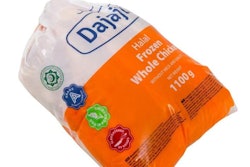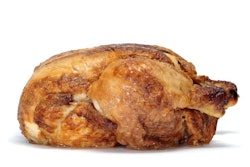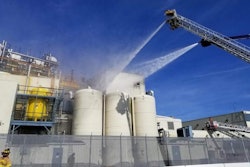
Few outside the industry use technical innovation and poultry processing in the same sentence. Yet Wayne Farms’ Pendergrass, Georgia, operation is at the forefront of solving the challenges of reclaiming treated poultry processing water. Because of this, the facility received a 2017 U.S. Poultry & Egg Association Clean Water Award Honorable Mention for the full treatment category.
Wayne Farms Pendergrass processes around 130,000 large birds per day using a permitted daily average of 800,000 gallons of water. The facility is one of nine fresh poultry plants operated by Wayne Farms, the seventh-largest vertically integrated poultry company in the U.S, according to WATT PoultryUSA’s Top Broiler Company rankings. Wayne Farms prides itself on supporting its customers with innovation, food safety and the highest product quality. Now, Wayne Farms Pendergrass is innovating water reclamation.
The transition in the treatment process
The facility operated a land application system (LAS) designed with fodder crops covering adjacent acreage soils to percolate, absorb and promote natural bacteriological processes to clean the pretreated wastewater. LAS depends on an environmental buffer to achieve indirect potable reuse.
About one decade earlier Wayne Farms Pendergrass faced severe water restrictions during drought conditions. Neither the current groundwater withdrawal permits nor LAS treatment support any future production increases. In response, leadership committed to major upgrades that would produce water acceptable for reuse in non-contact areas while laying the groundwork for future broader water supply innovations.
The facility enhanced its biological treatment system by replacing the LAS with a membrane bioreactor system (MBR) and ultraviolet light (UV) disinfection. Installed ultrafilters separate treated water from the activated sludge biomass. Enhanced phosphorus precipitation, denitrification and biomass storage occur with the reconfigured existing lagoons. More importantly, Wayne Farms Pendergrass applied for, and received, a National Pollutant Discharge Elimination System, or NPDES, permit from the state of Georgia’s Environmental Protection Division for direct discharge to Allen Creek, a tributary to the Middle Oconee River watershed listed as an impaired stream.
“We upgraded the wastewater treatment system including an offal area surge tank to tackle the overflows,” David Parks, Wayne Farms Pendergrass facility wastewater manager, said. “Now we manage offal and do a better job with that overall flow equalization (EQ) storage.”
New challenges
During the offal area upgrades, Parks and his team still had to address the unexpected impacts on the wastewater system.
“While all that was going on, we got more efficient at running our DAF and managing our existing but limited EQ basin,” Parks said.
The team also learned a lot during the system start-up.
“Some water quality parameters, like scale from hard water, matter a lot more with membranes,” Parks said. “We benefited from upgrading the existing system, but we had to address both debris in the sequencing batch reactor tank we now use for aerobic biological tank and out in the lagoons.”
Using best practices
Wayne Farms Pendergrass Crew Leader Jesse Scott said the start-up reinforced the idea that attention to detail and preventative maintenance are both critical. But he said the overall system performs well given the variability of the incoming wastewater and limited EQ storage. Scott said effectively operating the DAF and the biological portion of the system is still the important part of ensuring the membranes remain effective.
As a result, the new MBR and UV treatment coupled with other upgrades at Wayne Farms Pendergrass yielded a permitted discharge with non-detectable levels for pathogens and overall water quality greater than the previously land applied method.
Jeff Carroll, corporate environmental manager for Wayne Farms Pendergrass, said the facility now reuses about 95,000 gallons per day of ultra-filtered wastewater for pump seals, offal solids transport and screens.
“A conservation mindset is the most cost-efficient way to minimize potable water usage,” Carroll said. “For the foreseeable future we continue to focus on our water footprint through best management practices within the processing plant.”
Community service
Wayne Farms Pendergrass and its employees are active and focused on regular community service. Numerous contributions of poultry products and donations for fundraisers and scholarship programs are common. Many employees also provide hours of service. Moving forward, leadership sees its efforts to assure its groundwater resource sustainability, and a secure water supply based on its innovative wastewater system, as a long-term way to give back to the community while maintaining the 88-acre LAS as a wildlife habitat.
Wayne Farms Pendergrass envisions a path forward possibly including direct potable reuse (DPR) for more sustainable water reuse. While science, technical and policy considerations regarding DPR remain, Wayne Farms Pendergrass committed to minimizing its potable water footprint through conservation and safe water reuse.
Read more:
Transforming poultry wastewater into renewable resources, www.WATTAgNet.com/articles/32216
















